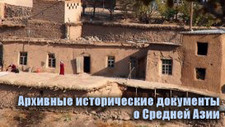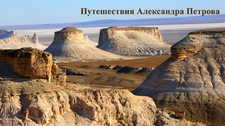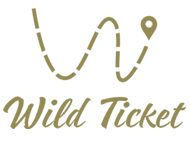You are here
Legends about Masat Ata.
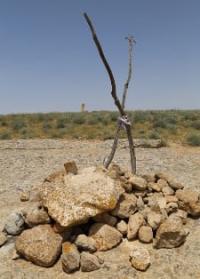
Popular legends of Mangistau.
"The trace of the tulpar is not erased"
Cultural heritage of Mangistau.
There are many folk tales about Masat Ata. One of the folk tales speaks of Masat Ata ability to fly. Another tells of a legend about Masat Ata performing namaz, when an enemy, taking him by surprise, crept up and cut off his head. Nature, outraged by this insidious act, responded by causing the earth to melt, despite the fact that Masat Ata was headless, he stood up and took a few steps on the molten rocks, on which his footprints and the footprints of his horse were imprinted. And now you can see these footprints.
Where they end, there is an underground mosque, carved into the rock, with a door facing south. In front of the mosque there is a flat stone with a gutter several meters long carved into it, which connects to a dug well. According to one legend, Masat ata came to Mangistau from Khorasan, more precisely from the city of Mashhad (modern Iran), to preach Islam, perhaps Masat comes from the name of the city of Mashhad.
At the time when Masat ata came, Kalmyks were raging in Mangistau. They did not give the Kazakhs any peace, either stole cattle or seized their pastures. Then he declared a gazavat against the Kalmyks. Masat ata was a brave and courageous warrior.
The enemies could not capture or kill Masat ata for a long time. One day they resorted to trickery, through Masat ata's wife they learned that during namaz his strength was exhausted, all the stones around him melted, and he became almost powerless.
And so, one day during namaz, the Kalmyks cut off Masat ata's head, then he grabbed the head that had fallen on the namazzhai with his hand, jumped on his horse and disappeared. Therefore, the burial place of Masat ata does not exist. You can see his tracks and the tracks of his horse even today.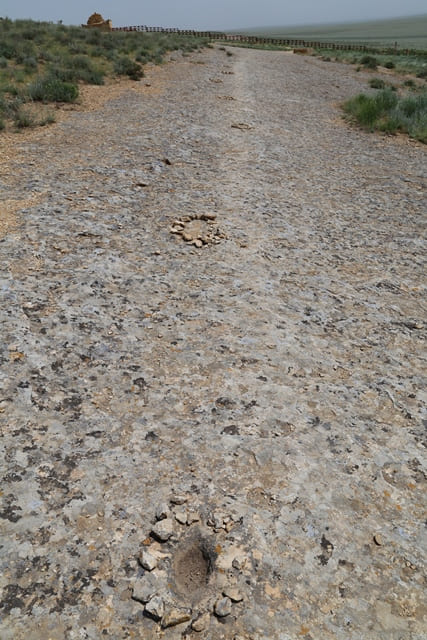
In this matter, we do not want to scientifically prove whether these are the same tracks or not, but the fact is that they exist to this day. To the west of the mosque, a few meters away, there are indeed very realistically similar tracks of human feet and horse hooves.
But the question arises as to how the tracks remained on the stone. Here we must not forget about the higher forces of nature, which are sometimes incomprehensible to the human mind.
Near the Masat ata mosque in Mangistau, on a hilly elevation, beautifully imprinted tracks of a barefoot man and a mare with a foal. According to legend, Masat was a respected, revered person among the Turkmens. The enemies were afraid to fight him openly, one on one, they sneaked up from behind and cut off his head during prayer in the mosque.
The indignant Masat ata grabbed his head in the hem of his chapan and set off in pursuit of his enemies. The mare and foal, seeing the grief of their master, galloped after him. Even the stone could not remain indifferent to the death of Masat, who was taken by surprise and became a victim of the villains.
Since then, traces of Masat, his mare and foal have remained on the stones. Childless women still pray at Masat ata's grave, believing that the trace of the mare and foal is sacred, stroking it with their hand and putting it to their foreheads. The Kazakh proverb "The trace of the tulpar is not erased" means that the hooves of the tulpar - a magical racehorse - are very hard, so the imprint of their tracks is not erased.
Worship of horse tracks on stones, veneration of horse hoof prints is a manifestation of elements of steppe magic. If someone has an only son, he is called Tuyak (hoof), Tuyakbai, because he is the only heir of his father. A silver ingot - zhamby is made in the shape of a hoof (taytuyak - a hoof of a shearer). All this is connected with the magical belief in the sacred power of a horse hoof.
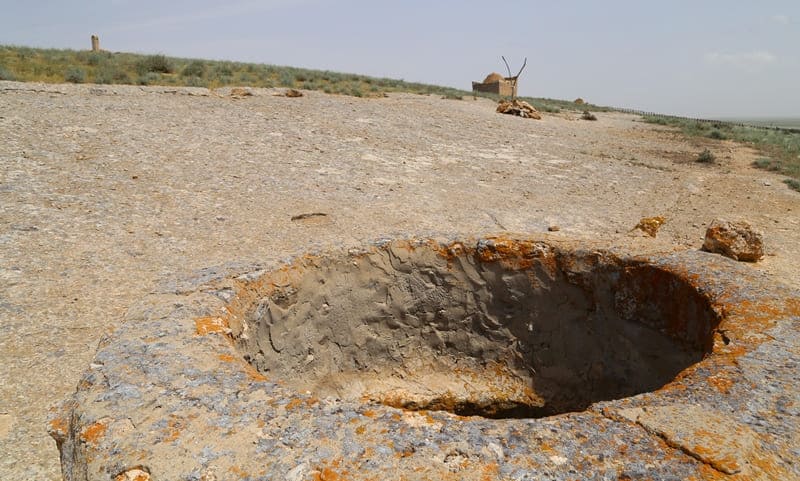
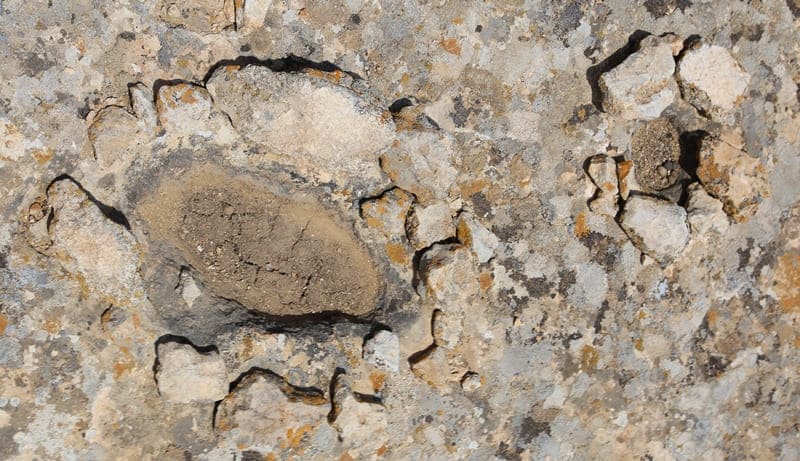
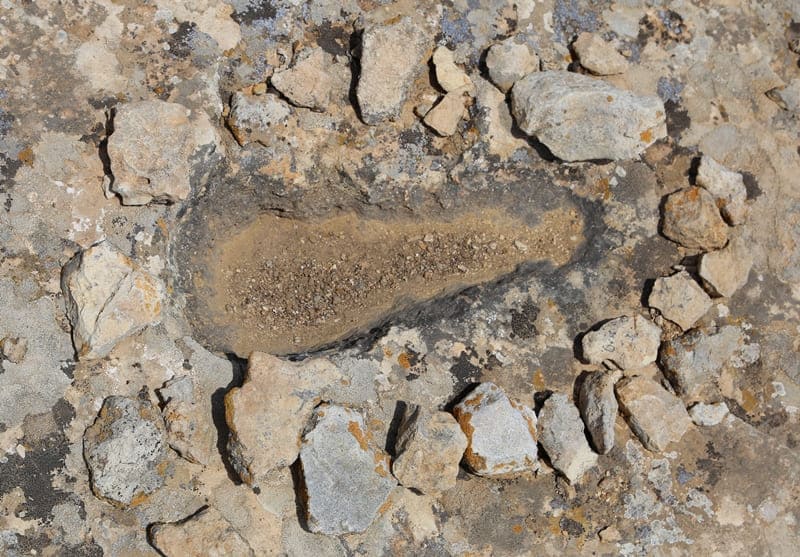
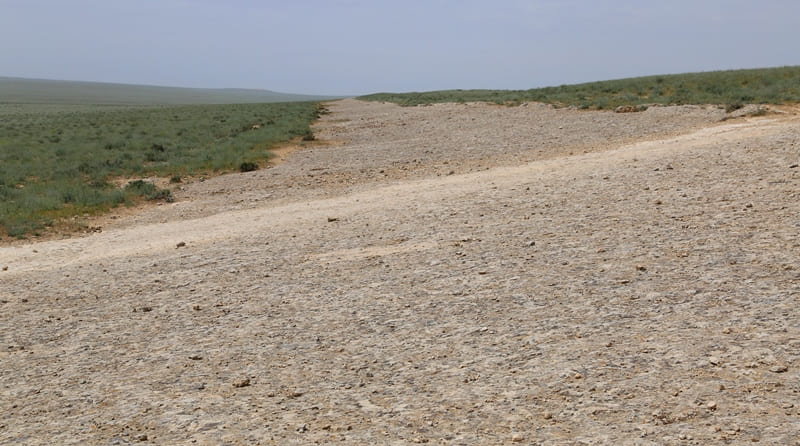
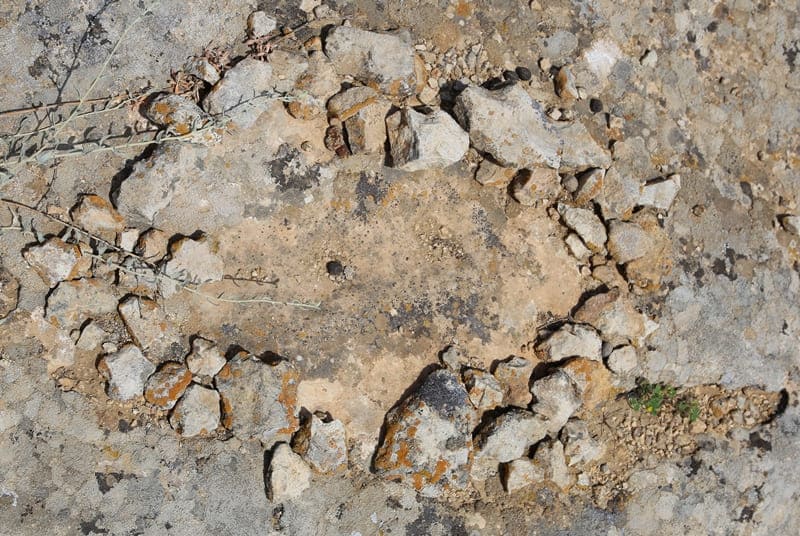
Authority:
Otynshy Koshbayuly, Murat Kalmenov. "Underground mosques of Mangistau". Ulketanymdyk basylym. Almaty, Publishing house "Orkhon". 2009. 160 p.
Sanislav Li. City of Aktau.
Photos by:
Alexander Petrov.





